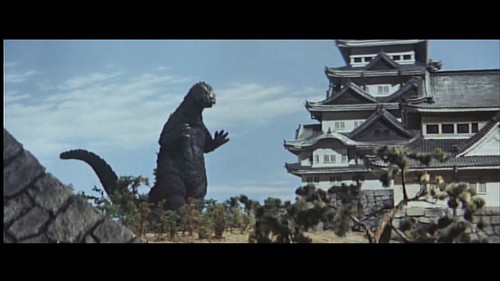Japan’s choice of Wim Wenders’ PERFECT DAYS (2023) as its submission for Best International Feature at this year’s Academy Awards and its subsequent nomination got me to thinking about Japan and its 72-year-long relationship with the Academy Awards, especially in light of the fact that two major Japanese hits in the U.S. market this past season, Takashi Yamazaki’s GODZILLA MINUS ONE and Hayao Miyazaki’s THE BOY AND THE HERON, were passed over in favor of Wenders’ film. Both films at least got one nomination each in other categories. More on this below, but first some history.
The Films of 1973, Part 2: A Great Year for Movies
30 Dec
Since I covered so many cop and crime films, Blaxploitation and kung fu in Part 1, I decided to post a second entry for everything else from 1973: westerns, horror, sci-fi, animation, critical favorites, and some of the great 1973 releases of all genres I discovered much later in revival theaters, on television, or home video. Here are more films I saw in their original release either in 1973 or 1974, when they finally showed up at neighborhood theaters. (There was more of a slow roll-out in those days and films that opened in two or three theaters in Manhattan sometimes stayed there for months.)
Westerns
PAT GARRETT AND BILLY THE KID
One of Sam Peckinpah’s western masterpieces, this one stars James Coburn as Garrett and Kris Kristofferson as Billy, with a high-powered supporting cast of western veterans. The version released to theaters was disowned by Peckinpah and new versions were crafted long after his death, one in 1988 and again, from Turner Entertainment, in 2005. I watched the most recent cut for this piece, which includes scenes that were cut from previous versions. I also remember seeing a TV cut in the 1980s, which doesn’t seem to exist anymore, which had some of the missing scenes.
40 Years Ago: Gojira and Space Firebird Come to New York
21 Aug
In the summer of 1982, the Public Theater in Manhattan ran a film series called “Summer in Japan,” which programmed a number of Japanese films that hadn’t previously been screened in the U.S. While that memorable summer also saw the highly touted premieres of five Hollywood sci-fi films now considered classics, E.T., BLADE RUNNER, THE THING, STAR TREK II: THE WRATH OF KHAN and TRON, the biggest impact on me was wielded by the two sci-fi films I saw at the Public as part of that series: GOJIRA (1954) and SPACE FIREBIRD 2772 (1980). Both films were shown in Japanese with English subtitles.
Life Meets Godzilla
6 SepLife Magazine recently published a special issue devoted to Godzilla, which I found in the magazine rack at my local Walgreen’s. After thumbing through it, I decided to purchase it despite the excessive price of $14.99, since it seemed to be a rare instance of a high-profile mainstream American media outlet covering a Japanese pop culture phenomenon. Granted, it was timed to promote the recent Warner Bros. release of the latest Hollywood Godzilla movie, GODZILLA VS. KONG, but there were enough pictures of the original Japanese Godzilla in the magazine to pique my interest. (Last I checked, Life Magazine and Warner Bros. were both part of the same corporate empire, although that may have changed recently.)
The Poetry of Kaiju: Godzilla vs. Mothra (1964)
1 Jun
At the end of my previous entry, a critique of GODZILLA (2014), I offered a teaser of this one, with five images from the first classic Godzilla movie I went back to after seeing the new one. After taking a number of screen grabs, I thought I’d make an entire entry composed of scenes from the film to show how poetic imagery infused the entire film (and other Japanese kaiju–giant monster–films) in a way that seems alien to the creators of the remake. By happy coincidence, I’ve been reading a book of academic essays called In Godzilla’s Footsteps: Japanese Pop Culture Icons on the Global Stage (Palgrave Macmillan 2006), edited by William M. Tsutsui and Michiko Ito, and it happens to contain an essay called, “Mothra’s Gigantic Egg: Consuming the South Pacific in 1960s Japan,” by Yoshikuni Igarashi. The essay looks at the first two Mothra films, MOTHRA (1961) and GODZILLA VS. MOTHRA (1964, aka GODZILLA VS. THE THING, as it was called in its U.S. release in 1964), and discusses Japan’s relationship to the South Pacific, where Mothra originates, in its history and popular culture and how the South represents an “innocent past” and a “mirror of Japan’s desire to escape the effect of its economic success—consumerism.” Igarashi goes on to discuss GODZILLA VS. MOTHRA and how Godzilla “represents a threat to Japan’s postwar prosperity” while Mothra has become “an emblem of Japan’s consumerism.”
Following are images from the film interspersed with excerpts from the text of Igarashi’s essay:









